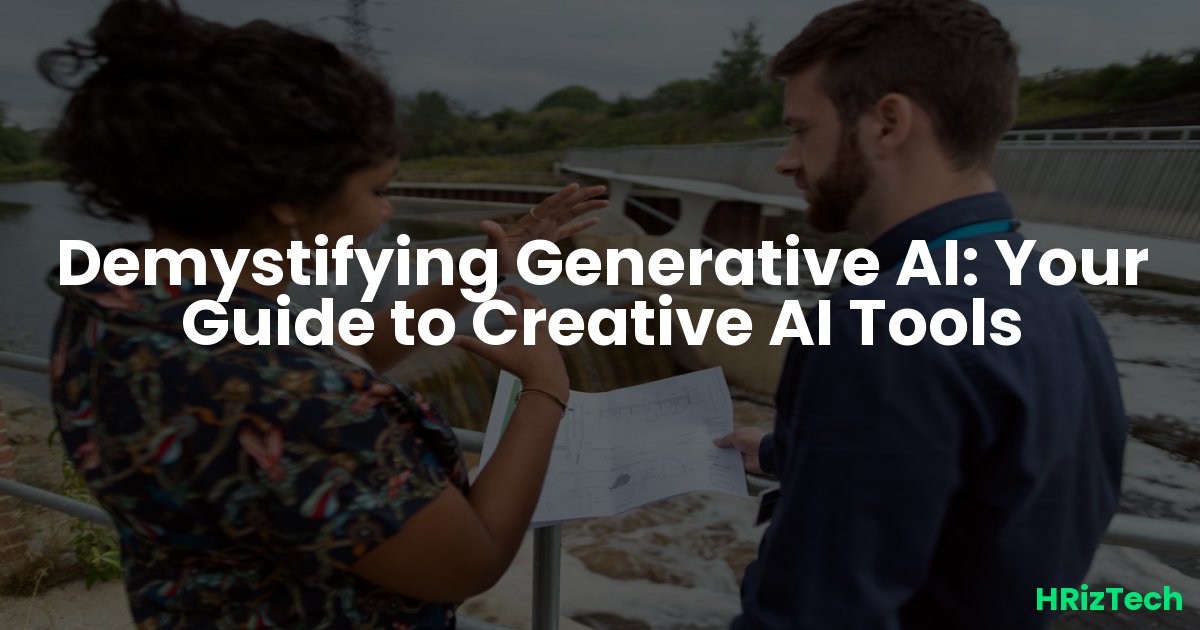Demystifying Generative AI: Your Guide to Creative AI Tools

Demystifying Generative AI: Your Guide to Creative AI Tools
Ever wished you had a personal assistant who could instantly write marketing copy, compose music, or even generate realistic images? That's the power of Generative AI, and it's rapidly changing the way we work and create. This isn't some futuristic fantasy; Generative AI tools are here now, and understanding them is key to staying ahead in the tech curve. This guide will help you navigate the exciting world of Generative AI.What is Generative AI, Anyway?
Generative AI is a type of artificial intelligence that creates new content instead of just analyzing existing data. Think of it as an AI with a creative spark! It uses machine learning models trained on massive datasets to generate text, images, audio, video, and even code. It's a powerful tool with a wide range of applications, from automating tasks to fueling artistic expression.
How Does Generative AI Work? The Magic Behind the Scenes
At its core, Generative AI relies on deep learning models, particularly Generative Adversarial Networks (GANs) and transformers. GANs work like two competing artists: one generates content, and the other critiques it, leading to increasingly refined outputs. Transformers, on the other hand, excel at understanding context and relationships within data, enabling them to generate coherent and relevant text or code.
Understanding the Different Types of Generative AI
Generative AI isn't a one-size-fits-all solution. There are various types, each suited to different tasks. For example, you have text-to-image generators (like DALL-E 2 and Midjourney), text-to-text generators (like GPT-3 and LaMDA), and even AI models that can compose music or generate 3D models.
The Practical Applications of Generative AI: Beyond the Hype
Generative AI isn't just a buzzword; it's transforming industries. Marketing teams use it to create engaging content, developers leverage it for faster coding, and artists use it to explore new creative avenues. The possibilities are truly vast.
Real-World Examples of Generative AI in Action
- Marketing: Generating ad copy, social media posts, and email newsletters.
- Software Development: Assisting with code generation and debugging.
- Art and Design: Creating unique images, music, and other forms of art.
- Customer Service: Powering AI chatbots capable of understanding and responding to complex queries.
How Do I Start Building an AI Chatbot Using Generative AI?
Building an AI chatbot using Generative AI might seem daunting, but it's becoming increasingly accessible. You can start by exploring platforms like Dialogflow (Google Cloud) or Amazon Lex, which offer user-friendly interfaces and pre-built models. Remember, choosing the right platform depends on your specific needs and technical expertise.
Step-by-Step Guide to Building a Simple Chatbot
- Choose a platform (Dialogflow, Amazon Lex, etc.).
- Design the conversation flow and define user intents.
- Train the model using sample conversations.
- Test and refine the chatbot's responses.
- Integrate the chatbot into your website or app.
The Future of Generative AI: Trends to Watch in 2025 and Beyond
Generative AI is evolving rapidly. A 2025 Gartner report predicts increased integration of Generative AI across various sectors, leading to improved efficiency and creativity. However, ethical considerations and cybersecurity concerns surrounding AI-generated content will also be paramount. We can expect more sophisticated models, better control over output, and increased focus on responsible AI development.
What are your thoughts on the ethical implications of using Generative AI? It's a crucial discussion we need to have as this technology progresses. The potential for misuse, including the creation of deepfakes and misinformation, requires careful consideration and proactive solutions.
Overcoming the Challenges of Implementing Generative AI
Despite its amazing potential, implementing Generative AI presents challenges. Cost, data requirements, and the need for skilled personnel are significant hurdles. Furthermore, ensuring the ethical and responsible use of Generative AI is critical to prevent negative consequences. However, the benefits far outweigh the challenges, especially considering the transformative potential of this technology.
Generative AI, a powerful tool for creative content generation, is reshaping how we interact with technology. Understanding its functionalities and limitations is crucial for leveraging its potential. By addressing the challenges and focusing on ethical implementation, we can harness the transformative power of Generative AI to enhance efficiency and creativity across diverse sectors.
What’s your favorite AI tool? Share below!
Comments
No comments yet. Be the first to comment!